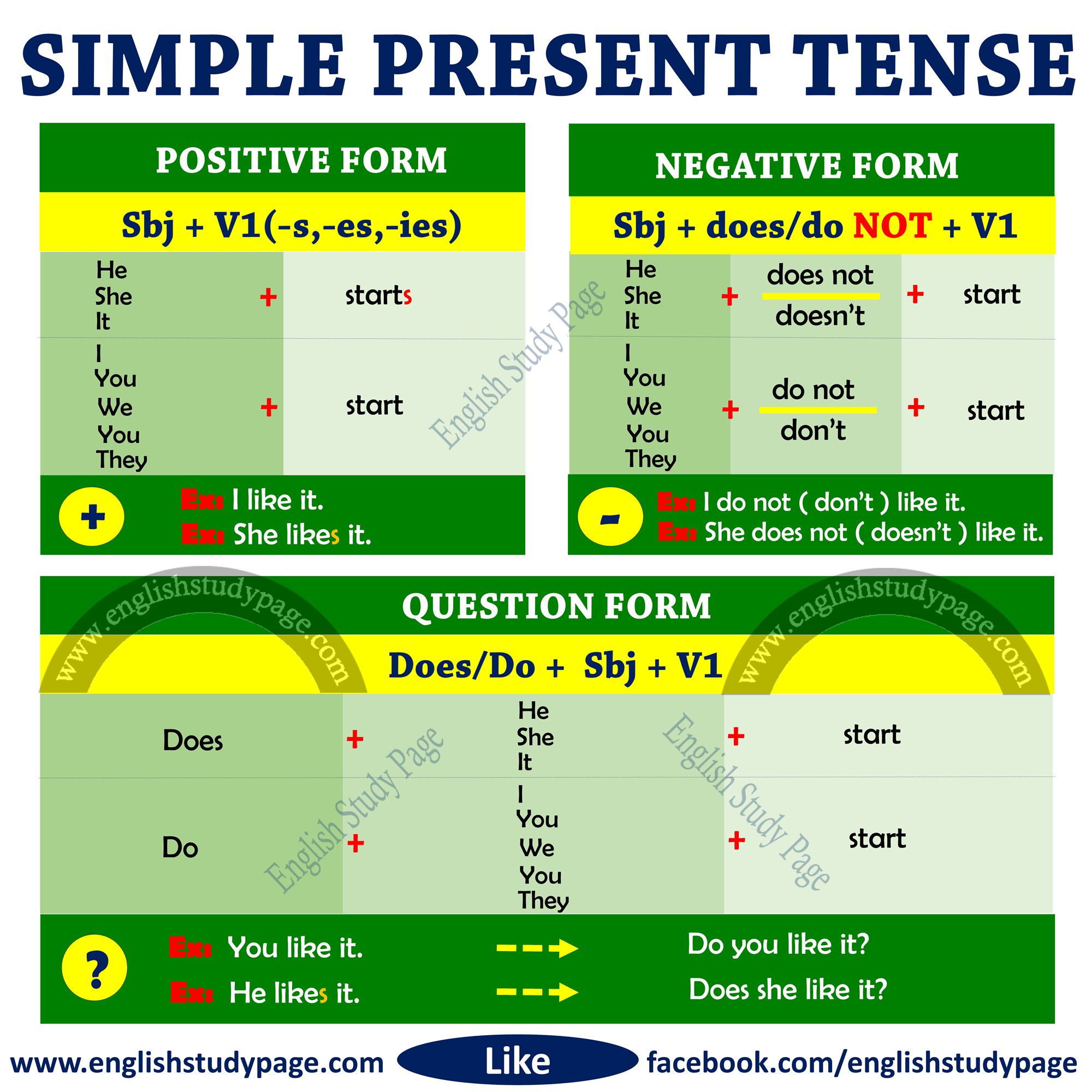SIMPLE PRESENT TENSE for grade VIII
This post includes detailed expressions about simple present tense and its structures in english. Please follow the list about Structure of Simple Present Tense;
This post includes detailed expressions about simple present tense and its structures in english. Please follow the list about Structure of Simple Present Tense;

The tenses simply show the time of an action.
Simple Present Tense indicates an action which happens in the present, but it isn’t necessary for actions to happen right now. Simple present tense indicates, unchanging situations, general truths, scientific facts, habits, fixed arrangements and frequently occuring events.
The Structures of Simple Present Tense
POSITIVE FORMS (+) :
- Subject ( I, You, We, They ) + V1 ( First Form of Verb )
- Subject ( He, She, It ) + VERB – S / ES / IES
NEGATIVE FORMS (-) :
- Subject ( I, You, We, They ) + do not / don’t + V1 ( First Form of Verb )
- Subject ( He, She, It ) + does not / doesn’t + V1 ( First Form of Verb )
QUESTION FORMS (?) :
- Do + Subject ( I, You, We, They ) + V1 ( First Form of Verb )
- Does + Subject ( He, She, It ) + V1 ( First Form of Verb )
SHORT ANSWER FORMS ( + / – ) :
- YES / NO + Subject ( I, You, We, They )+ do / do not (don’t)
- YES / NO + Subject ( He, She, It ) + does / does not (doesn’t)
| POSITIVE (+) | NEGATIVE (-) | QUESTION (?) |
|---|---|---|
| I start | I do not (don’t) start | Do I start |
| You start | You do not (don’t) start | Do you start |
| He starts | He does not (doesn’t) start | Does he start |
| She starts | She does not (doesn’t) start | Does she start |
| It starts | It does not (doesn’t) start | Does it start |
| We start | We do not (don’t) start | Do we start |
| You start | You do not (don’t) start | Do you start |
| They start | They do not (don’t) start | Do they start |
ATTENTION:
1. In Simple Present Tense, we add the suffix -s at the end of the verbs for the third singular subjects ( He, She, It ) . On the other hand, we use first forms of the verbs for other subjects ( I, You, We, You, They).
2. Although we add the suffix -s at the end of the verb for the their
Examples:
- My mother does not (doesn’t) let me go out with my friends.
- I do not (don’t) prefer my coffee black.
- She does not (doesn’t) put the keys on the table.
- The teacher does not (doesn’t) shout at us all the time.
- I do not (don’t) have two brothers.
- Coffee does not (doesn’t) grow in Brazil.
Question Sentences ( Do/Does + Sbj + V1)
Examples:
- Does your mother let you go out with your friends?
- Do you prefer your coffee black?
- Does she put the keys on the table?
- Does the teacher shout at us all the time?
- Do I have two brothers?
- Does coffee grow in Brazil?
NOTES:
We use other question words ( Like Who, What, Why , How much / many, How often etc.) in present tense.
1)
Question Words (who, what, why, how much / many, how often etc.) + do / does + subject pronoun ( he, she, it, I, you, we, they) + V1 ( First Form of Verb )
Examples:
- How often does he call you?
- Why do you always do this?
- How much does it cost?
look at the video


